Nhận định, soi kèo nữ Tây Ban Nha vs nữ Thụy Điển, 15h ngày 15/8
- Kèo Nhà Cái
-
- Nhận định, soi kèo Varazdin vs HNK Sibenik, 23h00 ngày 2/5: Tin vào cửa dưới
- Nữ họa sỹ Nga dùng ngực vẽ Thủ tướng Anh
- Quán "Chè Ma" ở TPHCM: Tồn tại hơn 80 năm, gây tò mò với món hột gà sống
- 'Trương Vô Kỵ' Mã Cảnh Đào vui mừng lên chức ông nội ở tuổi 58
- Soi kèo góc Valladolid vs Barcelona, 2h00 ngày 4/5
- Tăng trưởng lẹt đẹt, Tencent bỏ luôn bữa ăn miễn phí cho nhân viên
- Blogger Yang Soobin Hàn Quốc trong MV Đức Phúc bị ung thư
- Tâm sự của du học sinh về nước Pháp hoa lệ và đầy ám ảnh
- Soi kèo góc Valladolid vs Barcelona, 2h00 ngày 4/5
- Mỹ là điểm đến du học được cha mẹ ưa thích nhất
- Hình Ảnh
-
 Nhận định, soi kèo DPMM vs Tanjong Pagar, 19h15 ngày 2/5: Nối dài ngày vui
Nhận định, soi kèo DPMM vs Tanjong Pagar, 19h15 ngày 2/5: Nối dài ngày vui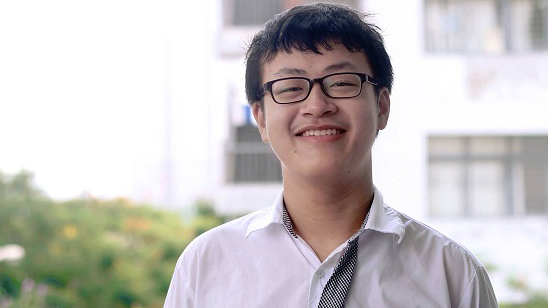
Nguyễn Tiến Thành - tác giả bài luận về bức họa "The School of Athens" vừa tốt nghiệp Trường THPT Chuyên Hà Nội - Amsterdam. Ảnh: NVCC
Dưới đây là bản gốc tiếng Anh bài viết về “The School of Athens” của Tiến Thành.
Aristotle is earthly; Plato, otherworldly. The thinkers are secular, but the architecture is Christian. The greatest High Renaissance artists—Michelangelo, Leonardo, Bramante—merge with the greatest minds of ancient Greece. Light floods the fresco, the light of an age of classical-antiquity revival, of the artist-humanist, of spiritual and intellectual reconciliation. Initially, I believed The School of Athens could be understood only as the glorious rediscovery of the ancient Western tradition by Renaissance Europeans. What value has it for a Vietnamese like me, brought up in a fundamentally different time, culture, and education system? Yet closer study revealed that the painting represents an ideal of learning as universal as it is inspiring: relentless, unhindered critical inquiry that crosses physical, cultural, and disciplinary boundaries. Resonating from ancient Athens through Renaissance Italy to modern-day Hanoi, where I live, the ideal depicted in Raphael’s School salvages the hope that, despite cultural and political restrictions, love of knowledge will prevail.
The title The School of Athens is a misnomer that conceals Raphael’s broad vision of learning. Banners over the fresco, which was painted between 1509 and 1511 under the commission of Pope Julius II, read Causarum Cognitio, meaning “Seek Knowledge of Causes.” With that, Raphael seems to suggest that what unites the figures is neither an institution nor prestige, but a common quest for knowledge and wisdom (“knowing why,” as Aristotle put it). The work is not so much a glorification of the great thinkers of antiquity as an extolment of the process of learning itself.
Raphael conveys the life of the mind through physical activities. Nowadays, we tend to take this conception of intellectual engagement for granted; back in the early 16th century, however, it was revolutionary. According to Glenn W. Most in “Reading Raphael: The School of Athens and Its Pre-Text,” in the tradition of personifying the seven liberal arts in painting, philosophy had usually been portrayed as an idealized woman flanked by male philosophers. Though alluding to this tradition by painting an enthroned lady on a tondo above the fresco, Raphael separated her completely from the central scene, allowing Plato and Aristotle to dominate. While scholars have focused on the contrast and balance between Plato and Aristotle—everything from their hand gestures to the colors of their clothing—what impresses me the most is Raphael’s decision to emphasize not an idealized personification of knowledge, but ordinary mortals immersed in the process of seeking knowledge through demonstrating and debating.
In fact, while having fun identifying each figure, I was surprised at the pluralism and inclusiveness of Raphael’s vision of learning. By some counts, only a third of the figures hail from ancient Athens; others lived far beyond that time or place. Raphael even included thinkers from outside the Western canon, including Zoroaster, a prophet from ancient Persia, and Averroës, a medieval Islamic scholar and an interpreter of Aristotle’s philosophy.
These two figures also challenge the common understanding that the various thinkers can be neatly separated along the idealism-realism axis between Plato and Aristotle. Averroës was a brilliant physician, physicist, and astronomer, yet he is placed on the side of the idealist Plato, and is consulting Pythagoras, who is often associated with mysticism. Similarly, Zoroaster, who resembles an astrologer holding a celestial globe, represents the practice of studying the stars and planets in order to divine human affairs—thus blending heavenly and earthly studies. All of this seems to recognize the spirit of inquiry as being fully inclusive, crossing temporal, geographical, cultural, and disciplinary borders.
Inspiring as that vision of learning may be, I still wondered where the viewer fits in. Should we simply gaze upon these great figures with admiration for their relentless pursuit of knowledge? Robert Haas, in Raphael’s School of Athens: A Theorem in a Painting?, offers an edifying answer: “Raphael is here painting not a historical gathering, but a Renaissance library collection.” According to Haas, the philosophers personify their books. I find this interpretation intuitive, because the fresco was painted on a wall of the Stanza della Segnatura, then the pope’s personal library. It also hints at a greater truth about the study of classic books. To portray the great thinkers, Raphael employed illusionism, a technique that makes the figures appear to be in the same room as the viewer. Thus, the viewer becomes not simply a passive observer of preserved knowledge, but a participant in ongoing conversations that span countries and centuries.
With this interpretation in mind, I’ve come to view Raphael’s fresco as an invitation to engage with the great thinkers of the past—to learn from or question their ideas. Unfortunately, such an invitation has been largely withheld from students in Vietnam. Here, ideological constraints in the modern education system along with a tradition of rote learning have resulted in limited exploration of a narrow range of ideas. For instance, in mandatory high-school civics courses, “philosophy” is introduced only to advance Marxism-Leninism. Ideas seem to be taught not so much for critical study as for nation building, through the promotion of a single worldview.
But rather than being pessimistic, I am inspired by the notion that The School of Athens represents a personal library, for it suggests that if we recognize the need to unlearn the habits of our formal schooling, and strive to be independent thinkers and engage with books, we can still attain true wisdom. Moreover, the painting’s historical context gives me hope that in the future, the pursuit of knowledge in Vietnam might flourish. Just as prosperity and leisure time enabled ancient Athenians to contemplate high-minded ideas, and a surge of wealth due to trade ushered in the Renaissance in Italy, Vietnam’s rapid economic growth might be changing its intellectual scene. More individuals are pursuing education and employment abroad, then bringing back new ideas and methods of learning for younger generations. An increasing number of foreign-language learners means that works by a wider range of thinkers can be translated, examined, and discussed. Though we have far more work ahead, it is promising to see debate organizations and experimental-learning communities sprouting up. In Hanoi, for instance, an informal organization called the Integrity Network has brought together a group of leading theorists and students in the humanities and social sciences to form Reading Circle Vietnam, whose participants discuss books and debate with experts on a variety of topics. The questions posed, on topics ranging from democracy to liberty to feminism to the validity of Vietnamese nationalism, keep getting bolder and encourage contrasting perspectives. Although still small in scope, these initiatives seem to be pioneering a trend of which I am happy to be a part.
This encouraging sign proves that rather than mindlessly absorbing a single perspective, more and more Vietnamese youths are interested in seeking alternative viewpoints from around the world, especially in the realms of history and politics. Yet we can still do better in extending Raphael’s ideal of critical inquiry into our intellectual endeavors. For example, recently, members of a club of high-school and college students interested in international relations, including me, began reading the works of Henry Kissinger. We admired his effective realpolitik and noble-minded interpretation of American diplomacy. Indeed, there is something to learn from Kissinger’s efforts to end the Vietnam War and normalize U.S. relations with China. However, upon further research, I find it troubling that there was no debate or even acknowledgment among us of Kissinger’s actions (some critics have called them war crimes) in supporting secret bombing in Cambodia, massacres in what was then East Pakistan, and oppressive regimes in Latin America. Perhaps due to a lingering tendency to accept the authoritativeness of “great ideas,” instead of carefully examining them, we simply treated his thoughts with reverence. Our approach was far from the one immortalized in Raphael’s painting.
The most insightful lesson I derived from The School of Athens is that the great thinkers are there not for us to respect unquestioningly, but rather for us to question respectfully. For me, the work is powerful ultimately because it reminds me that even under my country’s circumstances, individuals who love learning can work toward the ideal it depicts. The universal spirit of intellectual freedom and critical inquiry cannot be subdued, and while I look forward to seeing the painting in person someday, I will always strive to establish a personal School of Athens wherever my quest for knowledge takes me.
(Theo The Atlantic)
" alt=""/>Bản gốc bài luận gây xôn xao của nam sinh 18 tuổi - Đó là quan điểm của thầy Nguyễn Quốc Hùng trước thông tin đưa tiếng Nga và Tiếng Trung vào giảng dạy vào diện ngoại ngữ thứ nhất có tính bắt buộc từ năm 2017. Tổng thư ký HĐ chức danh GS Nhà nước đề xuất về quốc sách tiếng Anh" alt=""/>“Không nên đưa tiếng Nga hay tiếng Trung làm ngoại ngữ bắt buộc”
- Đó là quan điểm của thầy Nguyễn Quốc Hùng trước thông tin đưa tiếng Nga và Tiếng Trung vào giảng dạy vào diện ngoại ngữ thứ nhất có tính bắt buộc từ năm 2017. Tổng thư ký HĐ chức danh GS Nhà nước đề xuất về quốc sách tiếng Anh" alt=""/>“Không nên đưa tiếng Nga hay tiếng Trung làm ngoại ngữ bắt buộc”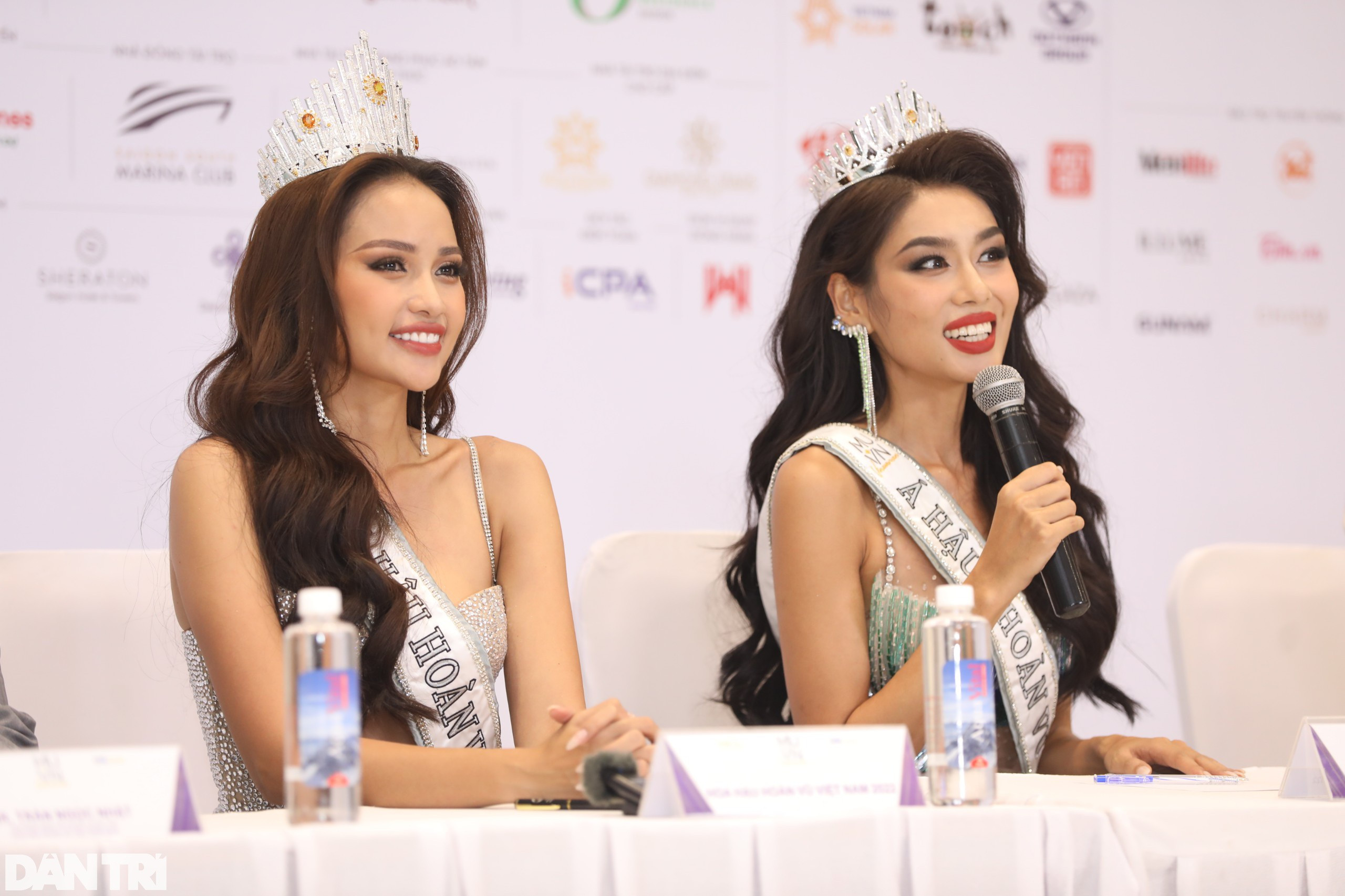
Hoa hậu Nguyễn Thị Ngọc Châu, Á hậu Lê Thảo Nhi tại họp báo sau chung kết (Ảnh: Anh Tú).
Tại họp báo, Ngọc Châu chia sẻ về cảm xúc khi đăng quang, cùng với những dự định trong thời gian tới. Người đẹp Tây Ninh cho biết khi bước vào đêm chung kết, cô không suy nghĩ nhiều, trình diễn như lần cuối được đứng trên sân khấu và cố gắng hết mình để tỏa sáng.
"Tận bây giờ, tôi vẫn cảm thấy rất vui và không thể tin nó đã trở thành sự thật", Ngọc Châu tâm sự về khoảnh khắc được xướng tên Hoa hậu.
Khi được hỏi về việc "dành cả thanh xuân để thi nhan sắc", Ngọc Châu trả lời: "Với tôi, Hoa hậu Hoàn vũ Việt Nam là một thử nghiệm, một đỉnh cao mới đòi hỏi tôi phải lột xác, thoát khỏi vùng an toàn".
Bản thân người mẫu sinh năm 1994 cũng không đặt nặng mục tiêu trở thành Hoa hậu. "Trước đây, tôi hoạt động với tư cách cá nhân, chưa có định hướng rõ ràng. Tôi tin Ban Tổ chức sẽ có định hướng, giúp tôi khai thác hình ảnh đa dạng trong nhiệm kỳ của mình", Ngọc Châu nói thêm.
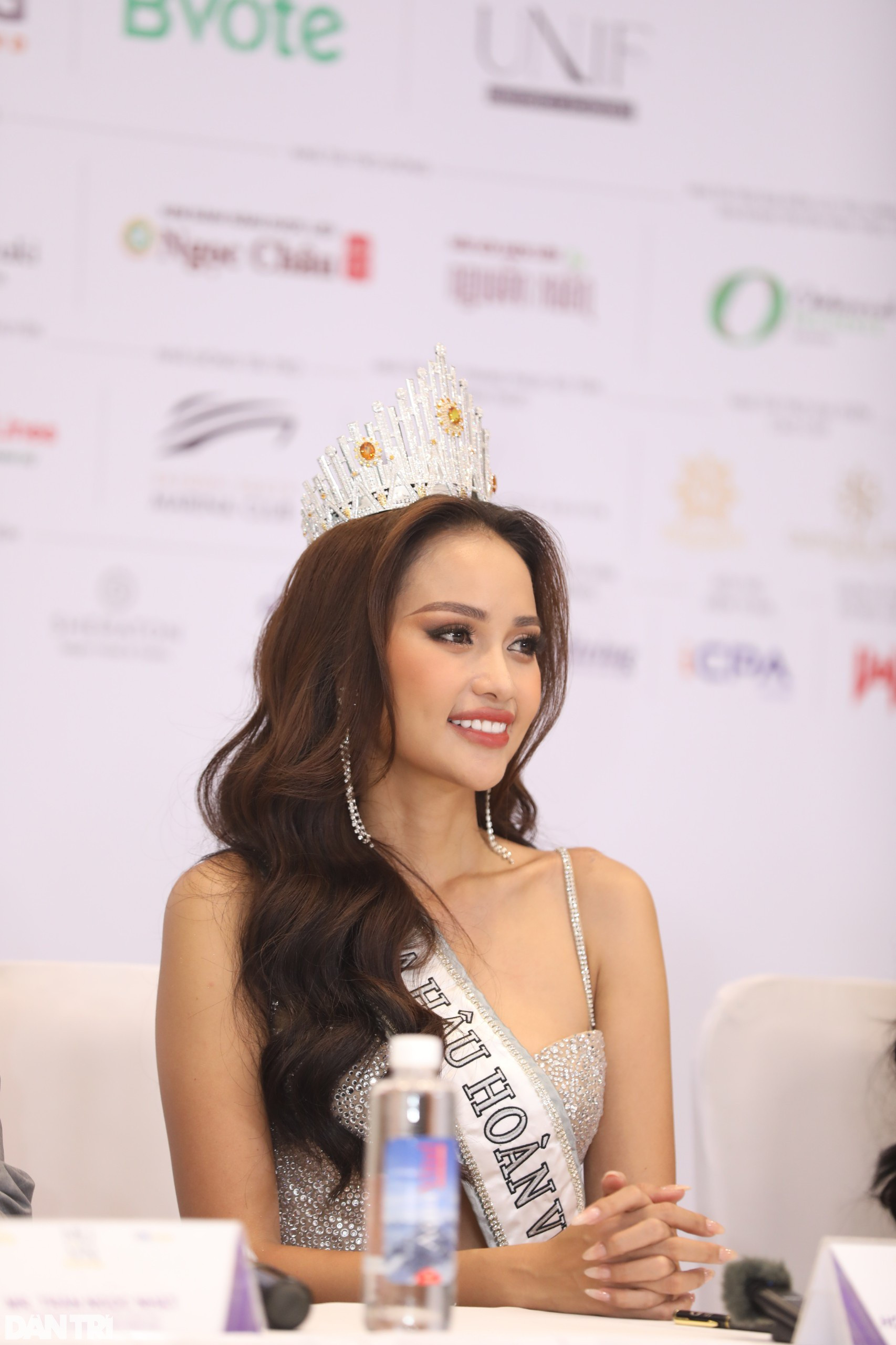
Ngọc Châu, 28 tuổi, đăng quang Hoa hậu Hoàn vũ Việt Nam 2022 (Ảnh: Anh Tú).
Với số tiền thưởng 300 triệu đồng, Ngọc Châu cho biết sẽ dùng 70% để thực hiện các dự án về sức khỏe, giáo dục cho trẻ em, đồng thời hỗ trợ các bé mồ côi sau Covid-19. Số tiền còn lại cô dùng vào việc trau dồi, hoàn thiện bản thân.
Trả lời câu hỏi về tình yêu, Ngọc Châu tiết lộ cô "chưa từng yêu". Đối với người đẹp, tình yêu tuyệt vời là một mối quan hệ mà hai người phải thấu hiểu, cảm thông và ủng hộ nhau trong mọi hoàn cảnh.
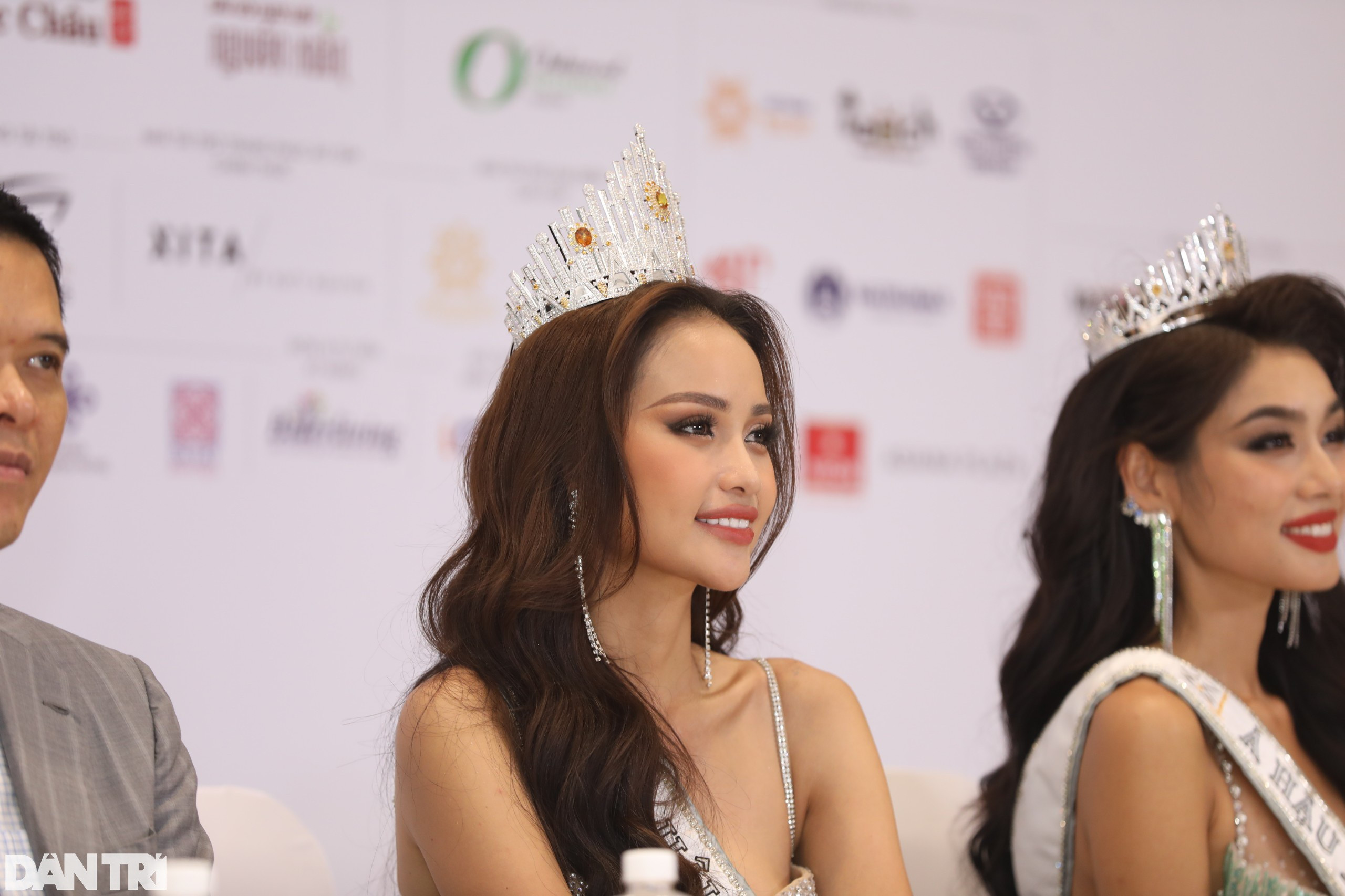
Ngọc Châu dùng phần lớn tiền thưởng để thực hiện các dự án từ thiện (Ảnh: Anh Tú).
"Top 3 có trình độ ngoại ngữ tốt hơn các năm trước"
Khi được truyền thông hỏi về kết quả, Á hậu 1 Thảo Nhi (SN 1994) khẳng định chiến thắng của Ngọc Châu hoàn toàn xứng đáng. "Tôi thiếu kinh nghiệm, còn nhiều yếu kém cần cải thiện. Tôi sẽ học thêm tiếng Việt và kỹ năng catwalk", cô cho biết.
Ông Trần Ngọc Nhật, trưởng Ban Tổ chức cho rằng mỗi thí sinh trong top 3 đều có vẻ đẹp riêng, là những gương mặt xuất sắc, xứng đáng với kết quả tốt nhất. Riêng về khả năng tiếng Anh, ông Nhật khẳng định top 3 năm nay có trình độ ngoại ngữ tốt hơn mặt bằng các năm trước.
"Chín muồi, trưởng thành và bản lĩnh. Chúng tôi tin đây là top 3 có thể "xuất khẩu" đến đấu trường quốc tế", đại diện Ban Tổ chức nói.
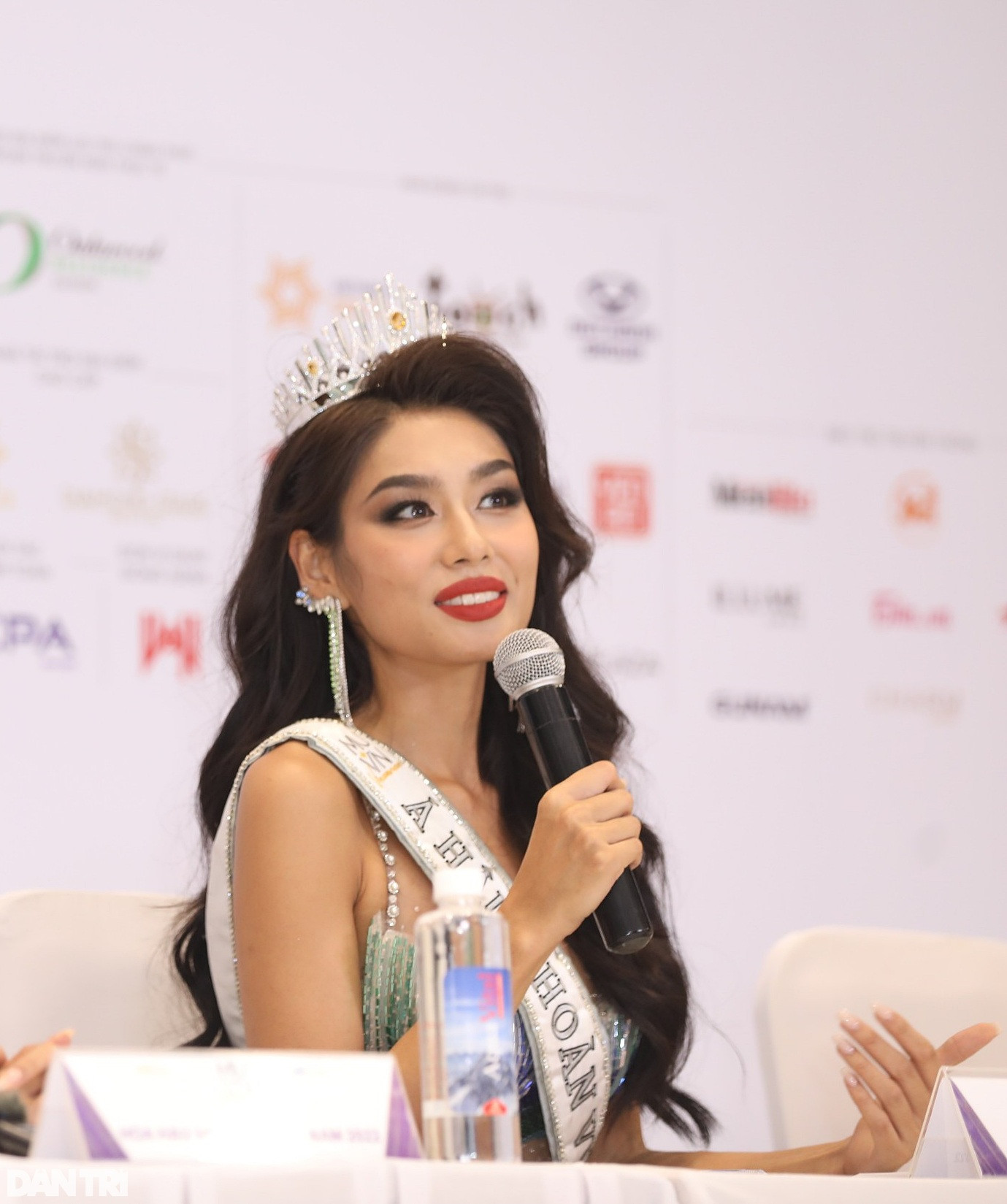
Thảo Nhi thừa nhận bản thân còn nhiều khuyết điểm, khẳng định Ngọc Châu chiến thắng xứng đáng (Ảnh: Anh Tú).
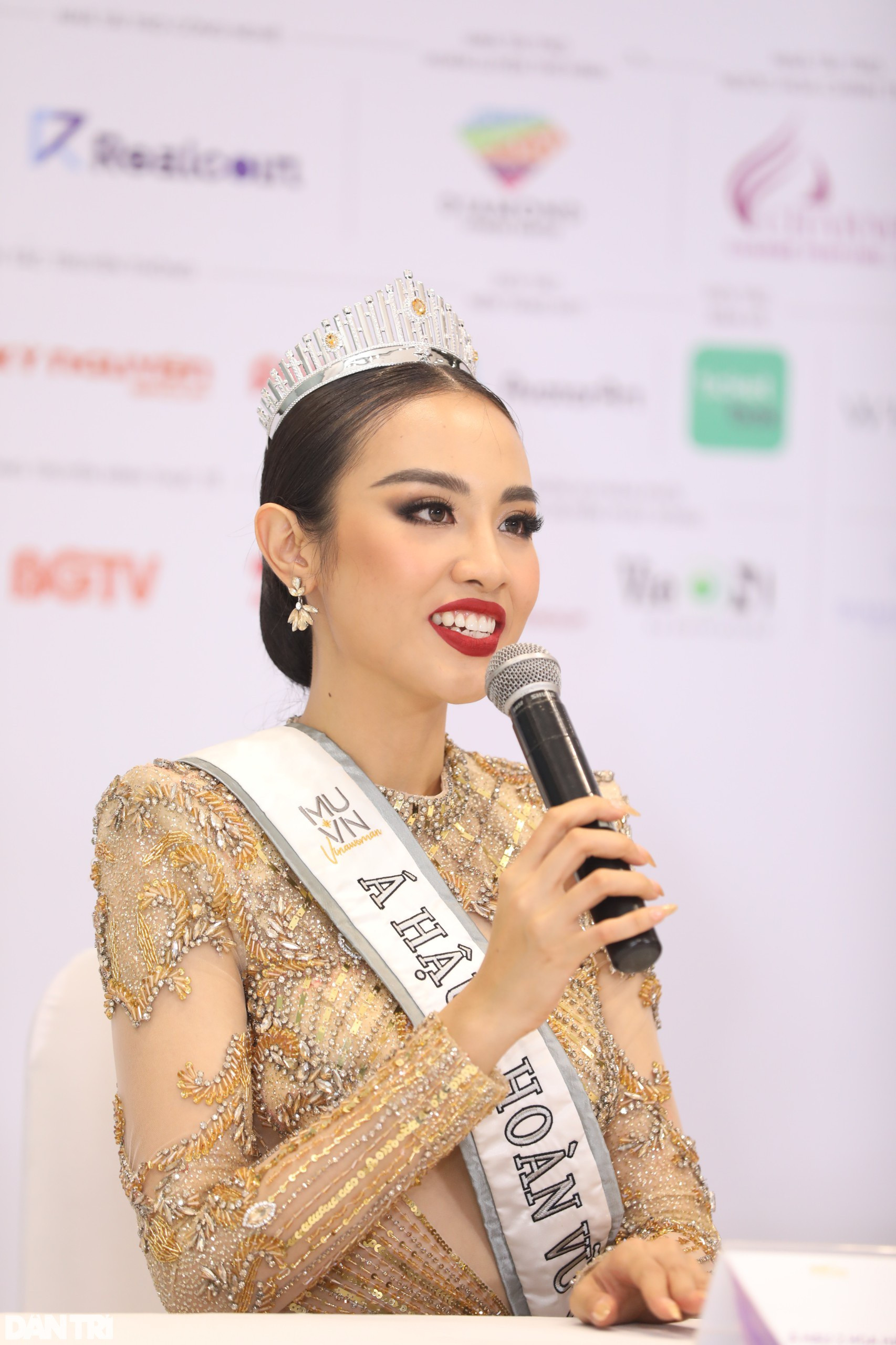
Á hậu 2 Huỳnh Phạm Thủy Tiên (Ảnh: Anh Tú).
Á hậu 2 Huỳnh Phạm Thủy Tiên hoàn toàn hài lòng với danh hiệu được trao. Thủy Tiên sinh năm 1998, quê Đồng Tháp, hiện là cử nhân ngành Kinh tế đối ngoại. Cô chia sẻ: "Dừng chân tại Á hậu 2 là niềm hạnh phúc. Với tôi, Hoa hậu Hoàn vũ Việt Nam là một nền tảng để tôi truyền cảm hứng đến mọi người. Tôi sẽ dùng hết tiền thưởng để làm từ thiện. Hành trình sắp tới chắc chắn sẽ rất thú vị".
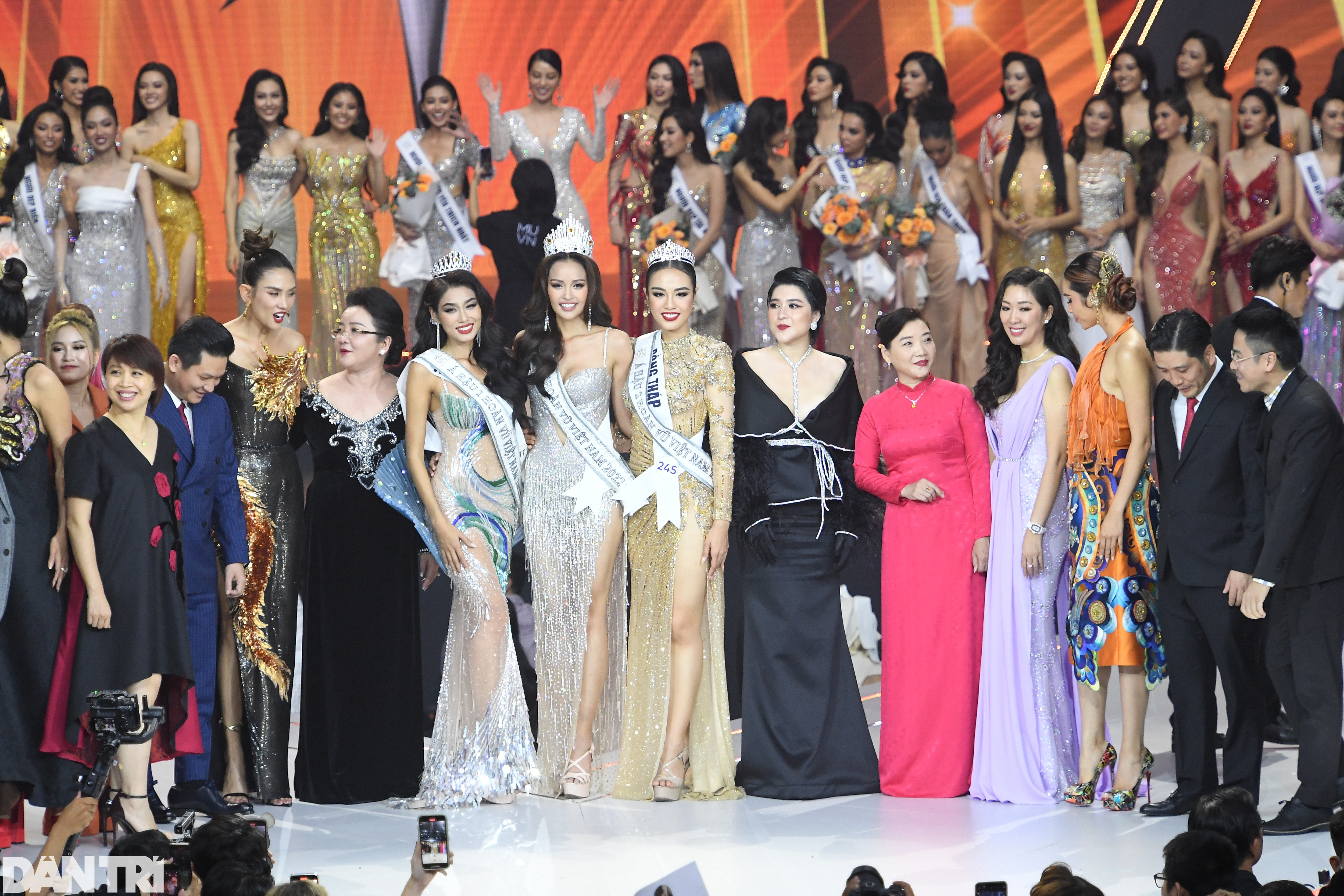
Hoa hậu Ngọc Châu và 2 Á hậu chụp ảnh kỷ niệm cùng các giám khảo, đại diện Ban tổ chức (Ảnh: Hoàng Giám).
Hoa hậu Hoàn vũ Việt Nam 2022 có chủ đề "Vinawoman - Bản lĩnh Việt Nam" nhằm thông điệp về chuẩn mực của cái đẹp của phụ nữ Việt Nam trong cuộc sống hiện đại. Sau các vòng loại phụ, cuộc thi lựa chọn 41 gương mặt xuất sắc nhất hội tụ ở vòng bán kết - chung kết.
" alt=""/>Tân Hoa hậu Nguyễn Thị Ngọc Châu: 'Tôi chưa từng yêu'
- Tin HOT Nhà Cái
-